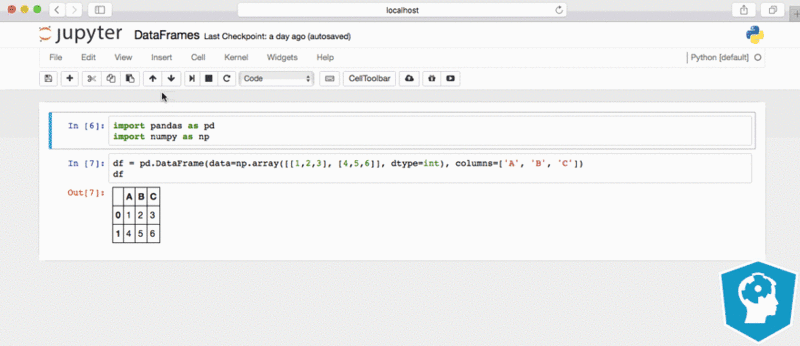
We'll start by importing necessary functions which will help us creates widgets UI. We'll then learn in the future about customizing these widgets further. It's a very good way to start using ipywidgets. It'll create widgets by itself by looking at parameters of functions and create widgets UI with all parameters represented as one widget. Ipywidgets provides a list of functions which can let us create widgets UI for any of our existing function. Ipywidgets can be easily integrated with a lot of other Python libraries like matplotlib, holoviews, bokeh, bqplot, ipyvolume, ipyleaflet, ipywebrtc, ipythreejs and many more.

Python - It runs in jupyter notebook kernel.You can create new notebooks from the dashboard with the New Notebook button, or open existing ones by clicking on their name. This way you won't need to learn javascript and continue to use python by just learning ipywidgets.Įvery widget generated by ipywidgets consists of two components behind the scene: The landing page of the Jupyter notebook web application, the dashboard, shows the notebooks currently available in the notebook directory (by default, the directory from which the notebook server was started).
#HOW TO CREATE A DASHBOARD IN PYTHON JUPYTER NOTEBOOK CODE#
It'll let you code in pure python and will generate an interactive widget for you using javascript underneath. It provides a list of widgets quite common in web apps and dashboards like dropdown, checkbox, radio buttons, and many more. Python has a library called ipywidgets which can help you with that.

Applications and dashboards designed as web app quite commonly use javascript for interactivity purposes which requires quite a good amount of javascript learning.īut what if you are a python developer and do not want to invest time in learning another programming language but still want to build interactive apps and dashboards? Old ways of creating static applications and dashboards won't help much in this fierce competition of being everything interactive. It has become a need of an hour to create interactive apps and dashboards so that others can analyze further using interactive widgets. Interactive dashboards and applications are getting quite common day by day. Jupyter notebook has become very famous nowadays and has been used by data scientists, researchers, students, developers worldwide for doing data analysis. Interactive Widgets in Jupyter Notebook using ipywidgets ¶


 0 kommentar(er)
0 kommentar(er)
